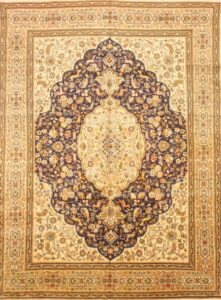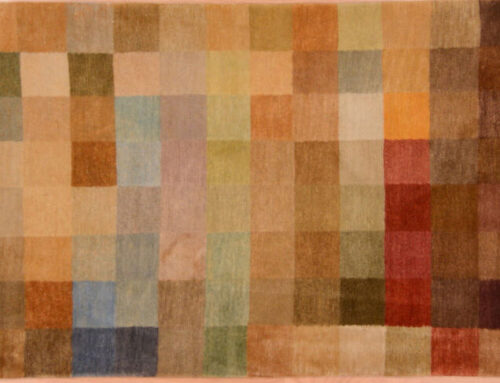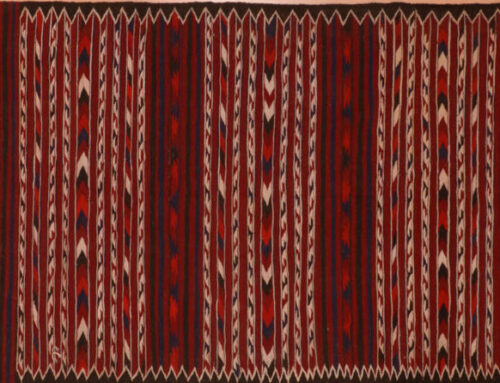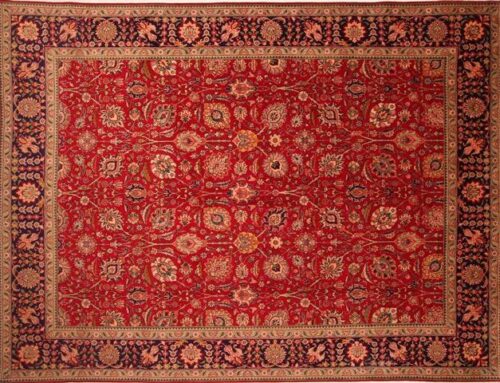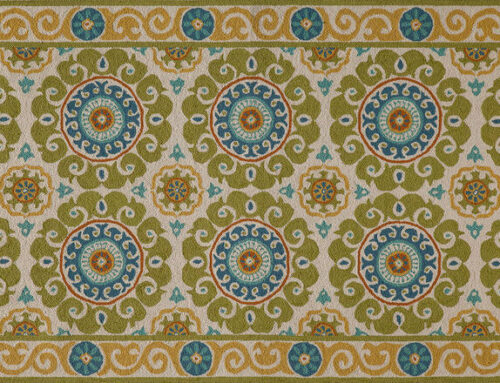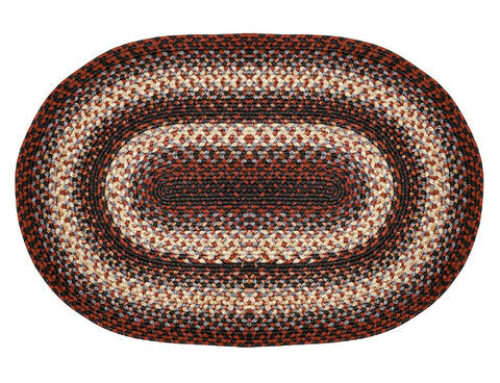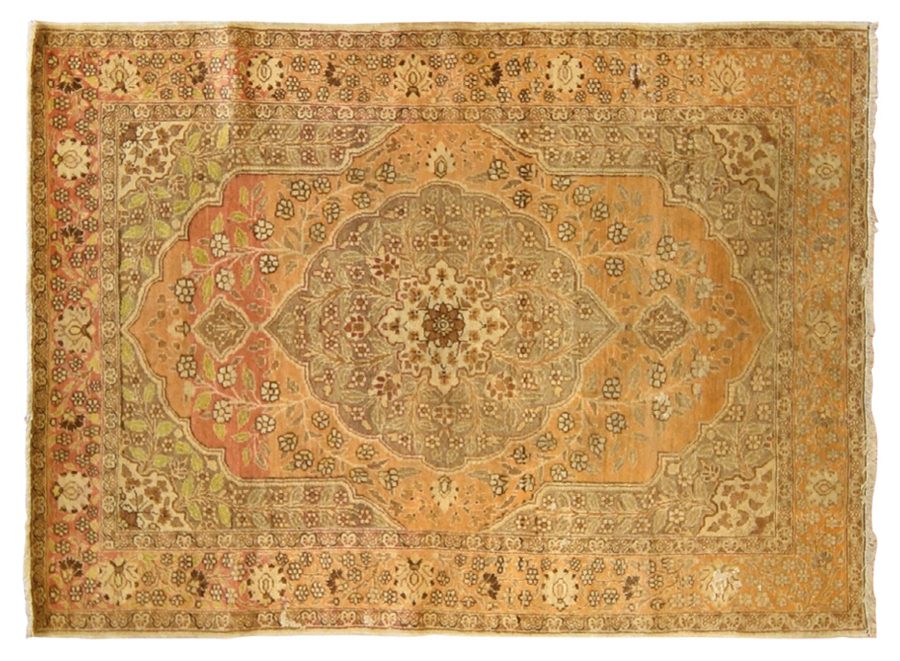
Origin of Tabatabaie Rugs
Tabatabaie rugs are among the most beautiful and legendary Persian carpets ever built. Tabriz is an ancient city in North Western Iran and it is probably responsible for producing the largest percentage of all Persian rugs. Some fine Tabriz carpets have been auctioned for well over a million dollars. There is no questioning the absolute beauty and elegance that a fine authentic Tabriz Persian rug will to one’s home.
History of Tabatabaie Rugs
Tabriz is probably the biggest handmade rug-producing center in the world, and most definitely one of the very oldest. Anybody who knows anything about Persian rugs will know something about Tabriz rugs. The enchanted city of Tabriz fully developed more than a thousand years ago. After the many invasions and wars that the nation went through, Tabriz took the lost and ancient ways of the past and created a monster of a rug exporting industry to supply beautiful carpets to the whole world. One of the finest eras of Persian rug weaving was the Saffavid period, which started in 1502 when the Saffavids overthrew the Turks who had captured Tabriz. They made the city into an artful and poetic center of Persian culture. And of course this meant producing fine rugs. Today, many rugs produced in Tabriz are attempting to follow the incredible artistry, which were the Persian Safavid rugs. Tabriz managed to keep these ancient traditions alive, in spite of all the conquering and political restructuring. Today when a big rug retailer somewhere in the world wants a specific pattern woven by hand on a rug, Tabriz is the city that he goes to. Tabriz is truly a magnificent figure in Iranian history and in the handmade carpet industry.
Characteristics of Tabatabaie Rugs
-
Material and Knots
Tabatabaie rug is an example of astounding and excellent skill that one comes to expect from Persian craftsmanship. The makers of these rugs take such pride in their product, that they often weave their signature in a small part of the carpet’s border. These signatures are found on extremely fine rugs made in other cities as well. The material used in these rugs, are wool, silk, or a combination of the two. A beautiful blend of wool and silk is the most common in fine Tabriz’s and pure wool is used in the medium quality ones. Often, in finer Tabatabaie carpets, the foundation of the rug is pure silk as opposed to cotton. Some carpets of Tabatabaie have 18 or 24 karat gold threads for the foundation of the rug. 300 to well over 500 knots per square inch are not uncommon in fine rugs from Tabriz city. The only rugs that can be compared with a fine Tabatabaie and Tabriz are Isfahans, Qums, and Nains. The Tabatabaie Persian rug is an absolutely gorgeous piece of art on which no dollar value can be placed and it is without a doubt, one of the most beautiful things to ever be placed on a floor.
-
Color
Many colors can be seen, such as burgundy, red, ivory and different creams, baby or navy blue, tan, or green. The colors are usually dark and silk is often used in conjunction with the wool to accentuate the highlights of the rug. The city of Tabriz is eminent around the world because of its incredibly rich history.
-
Design and Pattern
There can be many different unique designs but most of the time the pattern in a Tabatabaie rug is filled with dense floral motifs, with large palmettes, vases, foliage, and small flowers and garden elements scattered with wild profusion. The quality is exceptional in Tabriz made carpets.
There can be rugs of this type with a medallion or without one, and geometric designs are also seen sometimes. Tabriz has sub-styles as well. These include the world renowned elegant ‘Mahi’ (fish/Herati) and the beautiful Tabatabaie designs. The Mahi is probably one of the most elegant rug designs in the world. It consists of very small intricate fish like elements scattered neatly throughout the many borders and medallions of the carpet.
Collections
- Tabatabaie Rug | © Rugman


